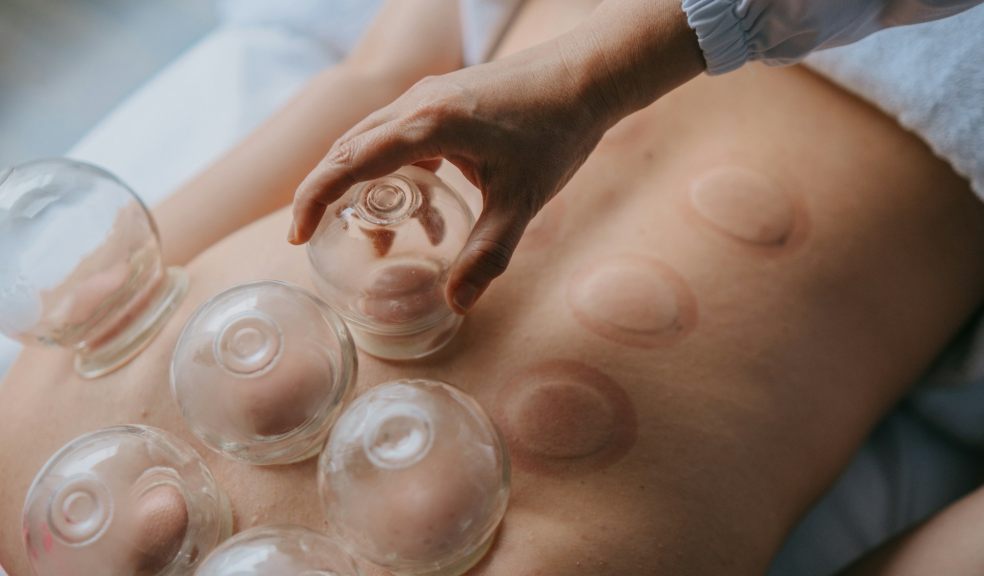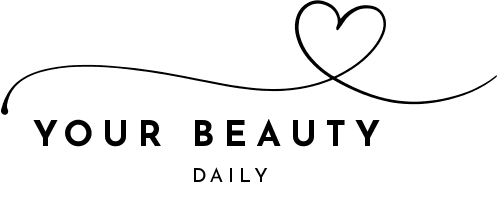
How Long Do Cupping Marks Last? What Athletes and Active People Should Know
For most people, cupping marks typically last between 3 and 7 days. These circular discolorations are not bruises but a result of increased blood flow, capillary expansion, and localized healing that occurs after suction is applied to the skin. Mild marks often fade within 2 to 4 days, while darker or deeper marks caused by more intense sessions or significant stagnation in the tissue can remain visible for up to 10 to 14 days.
The exact duration depends on several factors, including your skin type, circulation, metabolic rate, and how often you receive cupping therapy. Active individuals with good circulation often notice their marks disappear more quickly than those with slower recovery or certain health conditions. Understanding why these marks form and how to care for them properly can make the healing process smoother and more predictable.
Key Takeaways:
- Most cupping marks fade within 3 to 7 days and are a natural sign of increased blood flow and healing, not bruising or tissue damage.
- Duration varies based on factors such as skin type, circulation, suction strength, and post-treatment care, with deeper marks sometimes lasting up to two weeks.
- Proper aftercare speeds healing, including staying hydrated, moisturizing, gentle movement, and avoiding sun exposure to help marks disappear more quickly.
- Cupping supports active lifestyles by improving circulation, reducing muscle tension, and accelerating recovery, but sessions should be planned 5 to 7 days before events.
- Marks become lighter with regular treatments as circulation improves, and understanding their color and duration can offer insight into your body’s recovery and health.
What Cupping Marks Really Are and Why They Form
Cupping marks are often mistaken for bruises, but they form through a completely different biological process. When suction is applied to the skin, the underlying tissue is gently lifted. This negative pressure draws blood toward the surface, expands tiny capillaries, and activates the body’s natural healing mechanisms. The resulting discoloration is a visible sign of increased circulation and localized tissue repair, not tissue damage.
These marks can reveal useful information about what is happening beneath the skin. Their color, tone, and intensity often provide clues about circulation, stagnation, and how your body is responding to treatment:
- Light pink or pale red: Indicates healthy circulation with minimal stagnation. These marks usually fade within a few days.
- Deep red or purple: Suggests deeper stagnation, tension, or metabolic waste that the therapy is helping to release. These marks may linger for a week or more.
- Brownish or yellowish tones: Appear as marks heal, signaling that the body is clearing cellular debris and metabolic byproducts.
- Uneven or patchy marks: Can occur when different areas of tissue respond differently, often revealing areas with more stagnation or reduced circulation.
It is important to remember that these marks are not a sign of harm. They show that your circulatory and lymphatic systems are responding to the treatment and working to restore balance. Over time, with regular cupping sessions, many people find that their marks become lighter, less frequent, and fade more quickly, which indicates that circulation and tissue health are improving.
Factors That Influence How Long Cupping Marks Stay
Not everyone’s skin reacts to cupping in the same way. The length of time those circular marks remain visible depends on a combination of physiological factors, treatment variables, and daily habits. Understanding what influences your body’s response can help you anticipate how long your marks might last and, in many cases, shorten their duration.
Individual Physiology
Your body’s internal state is one of the most important factors affecting how long cupping marks stay.
- Circulation and metabolism: People with strong circulation and faster metabolic rates tend to clear stagnant blood more efficiently, so their marks fade sooner. Those with slower circulation may notice that discoloration lingers.
- Skin type and sensitivity: Fair, thin, or sensitive skin often shows darker or more noticeable marks and may take slightly longer to return to normal.
- Hydration and nutrition: Adequate hydration supports healthy blood flow and tissue repair, while nutrient-rich diets help the body heal and regenerate more efficiently.
Treatment Variables
The way cupping is performed also influences how long the marks remain visible.
- Suction strength: Gentle suction draws less blood to the surface and usually results in lighter marks, while stronger suction produces deeper marks that can last longer.
- Session duration: Longer sessions allow more blood to pool under the skin, which can intensify discoloration and extend the healing period.
- Technique type: Stationary cupping often leaves darker, longer-lasting marks than moving cupping. Wet cupping, which involves small incisions, can also take longer to heal compared to dry cupping.
Lifestyle and Recovery Habits
What you do after a session can significantly affect how quickly marks disappear.
- Activity level: Light movement, stretching, and regular exercise improve circulation, which supports faster fading.
- Sleep and stress levels: Restful sleep and low stress enhance tissue repair, while fatigue or chronic stress can slow healing.
- Frequency of sessions: Over time, repeated cupping improves circulation and tissue health, which often leads to lighter marks and quicker recovery.
These factors work together to shape your body’s response to cupping. By supporting circulation, staying hydrated, and following healthy recovery habits, you can help your skin return to its normal state more quickly.
Cupping Recovery Timeline for Athletes and Active Individuals
Most people can return to light activity within 24 hours of a cupping session. Gentle stretching or low-impact movement can even support faster healing. If the skin feels tender, waiting 48 to 72 hours before intense workouts or contact sports helps prevent irritation and allows tissue to recover fully.
If you have a race, competition, or public event, plan your session at least five to seven days in advance so any visible marks fade in time.
Cupping also supports performance by improving circulation, reducing muscle tension, and speeding recovery between training sessions. Mild sensitivity is normal and typically resolves within a day or two, especially when combined with rest, hydration, and good nutrition.
How to Help Cupping Marks Fade Faster
While cupping marks will naturally disappear on their own, a few simple habits can help your body clear them more quickly and support healthy skin recovery.
Post-Treatment Care
- Stay hydrated: Drinking plenty of water improves circulation and helps flush out metabolic waste.
- Moisturize the skin: Applying a gentle, fragrance-free lotion keeps the skin supple and supports healing.
- Use warm compresses: Light warmth encourages blood flow and can speed up the fading process.
- Keep moving: Gentle activity like walking or stretching boosts circulation and lymphatic drainage.
What to Avoid
- Sun exposure: Treated skin is more sensitive, so protect it from direct sunlight until the marks fade.
- Harsh products: Avoid strong creams, exfoliants, or chemicals that could irritate the skin.
- Scrubbing or picking: Let the marks fade naturally to prevent irritation or discoloration.
With proper aftercare and a few small lifestyle adjustments, most cupping marks fade more quickly, leaving your skin clear and ready for your next session.
How Different Cupping Techniques Affect Mark Duration
Not all cupping sessions leave the same kind of marks. The technique used plays a major role in how dark the circles become and how long they stay visible.
Dry Cupping vs Wet Cupping
- Dry cupping: This is the most common method, using suction alone. Marks are usually lighter and fade within a few days to a week.
- Wet cupping: This involves small incisions to draw out a small amount of blood. Because it penetrates deeper layers, marks can be darker and may last up to two weeks or more.
Stationary Cupping vs Moving Cupping
- Stationary cupping: Cups stay in one place, creating concentrated suction that often results in deeper, longer-lasting marks.
- Moving cupping: The cups are glided across the skin, stimulating circulation over a larger area and typically producing lighter, less noticeable marks.
Understanding these differences can help you choose the right technique for your needs, whether you are seeking a strong therapeutic effect or prefer minimal visible marks.
Common Concerns About Cupping Marks
It is normal to feel concerned if cupping marks look darker or last longer than expected, especially if it is your first session. In most cases, these reactions are harmless and part of the body’s natural healing response.
Are Cupping Marks a Sign of Damage
Cupping marks are not bruises and do not indicate tissue injury. They show that blood has been drawn to the surface to promote circulation and healing. Darker marks usually reflect deeper stagnation, not harm.
When to Seek Medical Advice
While rare, some signs may require professional attention. Contact a healthcare provider if you notice:
- Marks that persist for more than three weeks
- Severe pain, swelling, or blistering
- Signs of infection, such as warmth, pus, or fever
- An allergic skin reaction to oils or materials used during treatment
For most people, cupping marks are a temporary and expected part of the recovery process. As your body adjusts and circulation improves, future marks often appear lighter and fade more quickly.
Cupping Marks and Everyday Appearance
For many people, the most common concern about cupping is how the marks look in daily life. While they are harmless, they can draw attention, especially if they are visible on areas like the shoulders, neck, or back.
How to Conceal Marks When Needed
- Wear lightweight, breathable clothing that covers treated areas until the marks fade.
- Use a gentle, non-comedogenic concealer on fully healed skin if marks are still visible before an event.
- Schedule sessions strategically so marks have time to fade before competitions, vacations, or photo shoots.
Caring for Skin Between Sessions
- Exfoliate gently once the marks are gone to keep circulation strong and skin smooth.
- Moisturize regularly to support elasticity and reduce sensitivity over time.
- Rotate treatment areas if you cup often to prevent repeated stress on the same part of the skin.
With a little planning, cupping marks do not need to interfere with daily life. Most fade quickly and become less noticeable with consistent aftercare and improved circulation over time.
Expert Advice on Safe and Effective Cupping for Active Lifestyles
For those who include cupping in their recovery routine, understanding how often to schedule sessions and how to choose the right practitioner can make a big difference in results and skin health.
How Often to Get Cupping
Most active people benefit from cupping once every two to four weeks during intense training periods. This frequency allows the body enough time to heal between sessions while still supporting circulation, muscle recovery, and overall performance. During lighter training phases, spacing treatments further apart may be more appropriate.
Choosing a Qualified Practitioner
Working with an experienced professional ensures your cupping sessions are safe and tailored to your needs. Look for someone who:
- Is trained and certified in cupping therapy or traditional Chinese medicine
- Adjusts suction strength and duration based on your goals and skin sensitivity
- Explains aftercare steps and what to expect following treatment
A knowledgeable practitioner will customize the technique and intensity for your body and activity level, helping you achieve the therapeutic benefits of cupping while minimizing the duration and intensity of any marks.
Understanding Cupping as Part of a Healthy Recovery Routine
Cupping marks are a visible sign that your body is responding to increased circulation and tissue repair. They are not a sign of harm and should not be a cause for concern. Most marks fade within several days, while deeper discoloration may take up to two weeks, depending on factors such as skin sensitivity, metabolic rate, and the strength of the suction used.
When paired with proper aftercare, hydration, balanced nutrition, and rest, cupping can become a powerful part of your overall wellness strategy. It supports faster muscle recovery, reduces tension, and enhances mobility, all of which help you train more effectively and feel your best. Over time, as circulation improves and your body adapts, marks often become lighter and fade more quickly, making cupping a simple, natural addition to a healthy recovery routine.
FAQs
Do cupping marks mean toxins are leaving the body?
Not exactly. The marks reflect increased blood flow and circulation, which helps the body process metabolic waste, but they are not toxins being released directly.
Why are my cupping marks darker than expected?
Darker marks usually indicate areas with more stagnation, tightness, or tension. They can also occur if the suction was stronger or the cups were left on for a longer time.
Can I still exercise if I have cupping marks?
Yes. Light movement is usually safe within 24 hours, but avoid intense friction, heavy lifting, or contact on treated areas until the skin feels fully recovered.
Will cupping marks leave permanent scars?
No. Cupping marks are temporary and fade as your body heals. They do not cause scarring when the skin is cared for properly.
Are cupping marks supposed to hurt?
Mild tenderness can be normal, but significant pain is not. If discomfort lasts longer than a few days, speak with a healthcare professional.
Should I avoid cupping before a competition or event?
It is best to schedule sessions at least a week in advance to allow any visible marks to fade before important events.
Can cupping help with muscle knots or stiffness?
Yes. Cupping improves circulation and helps release tension, which can ease stiffness and support faster recovery from muscle soreness.
How do I know if my cupping session was too intense?
Very dark marks that last longer than two weeks or significant tenderness may indicate that the suction was too strong. In future sessions, discuss intensity adjustments with your practitioner.

















